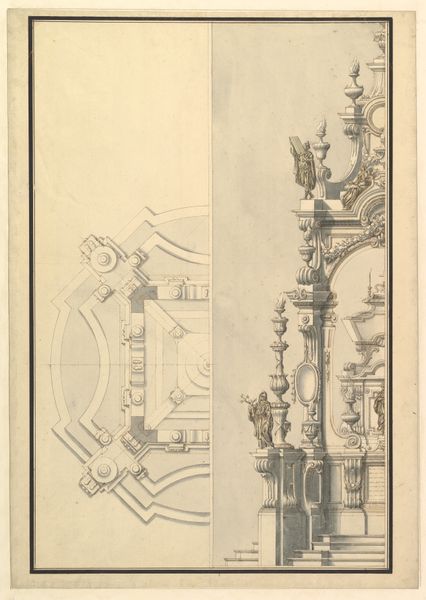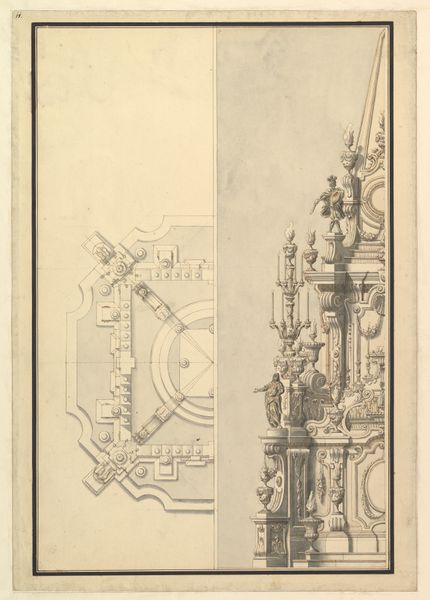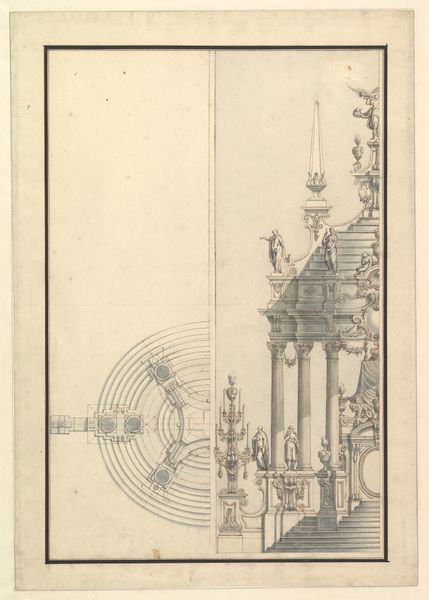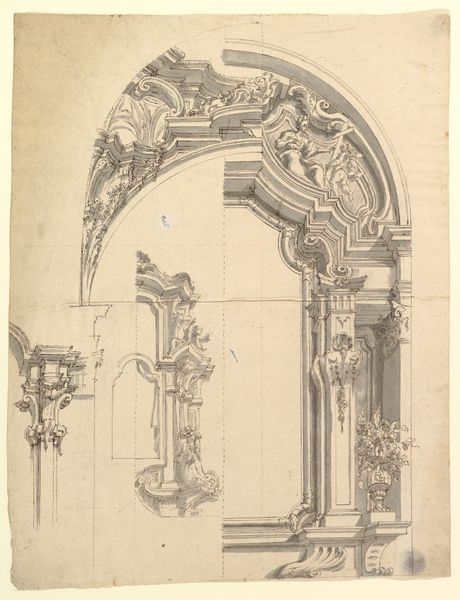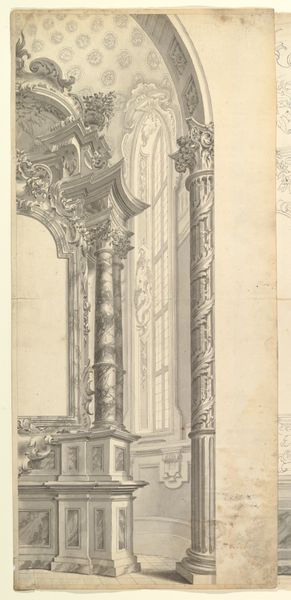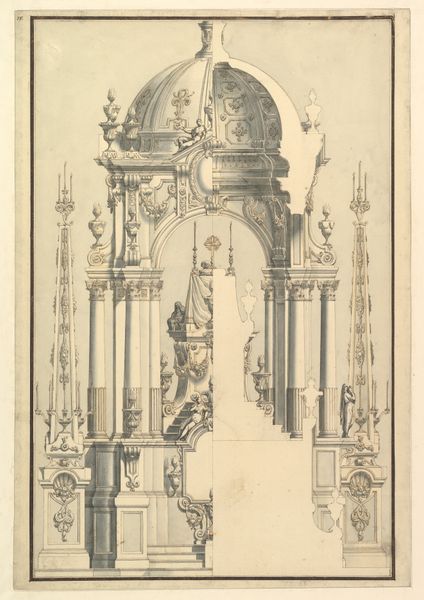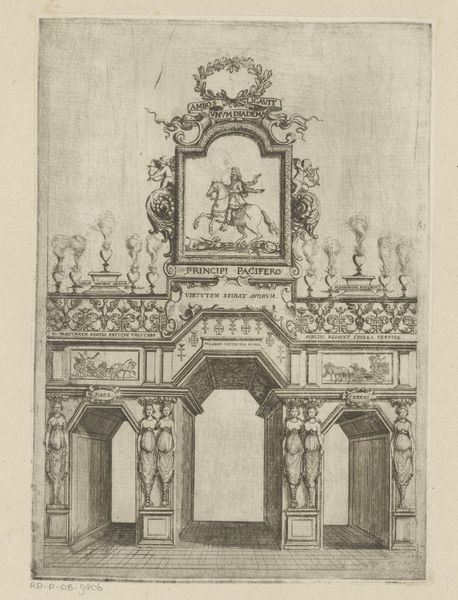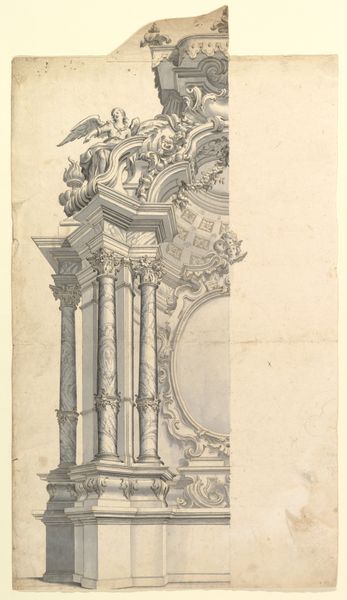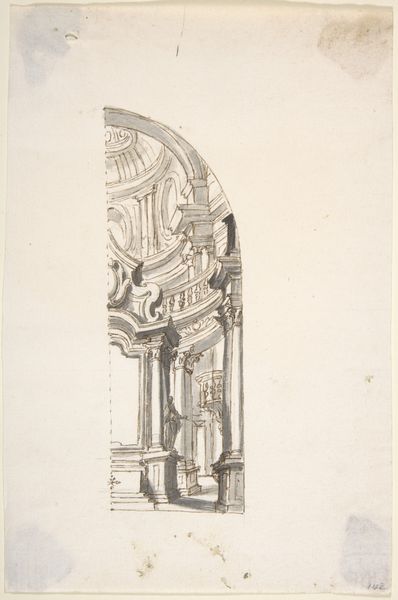
Half Elevation and Half Ground Plan for a Catafalque for an Electress Palatine 1696 - 1756
0:00
0:00
drawing, print, architecture
#
drawing
#
baroque
# print
#
form
#
line
#
architecture
Dimensions: 20 x 14-1/4 in. (50.8 x 36.2 cm)
Copyright: Public Domain
Curator: What a somber yet magnificent piece. I'm drawn in by the density of its ornament, a visual feast almost dizzying to behold. Editor:Indeed! What you are observing is "Half Elevation and Half Ground Plan for a Catafalque for an Electress Palatine" created sometime between 1696 and 1756 by Giuseppe Galli Bibiena. Look closely at the way he's presented the ground plan against the elevation—a rather common technique that allowed architects to effectively translate and display space during this time period. Curator: It strikes me as more than just technical proficiency; it's about the elaborate consumption surrounding death rituals and Baroque theatrics. One wonders about the labor required to build and decorate such a monumental, temporary structure. Editor: Right. The historical context is crucial. This wasn't merely about commemorating a person; it was about staging power. Catafalques, temporary platforms erected to honor the dead, provided an opportunity for rulers and aristocratic families to display wealth, status, and artistic patronage through architecture. Consider the role of artisans and designers; were they conscripted from the local populace or sourced from further afield? Curator: It also illustrates the role of drawing as a primary material used for Baroque scenography. We see through line and composition how stagecraft impacted culture through ritual performance. The meticulous detail in each carved element and statue signifies immense material wealth spent constructing and maintaining images for both elite consumption, public spectacle, and cultural affirmation. Editor: Precisely. Bibiena came from a family that dominated scenic design. Their mastery extended across Europe’s courts and opera houses. This print represents a scaled plan, intended for widespread circulation, potentially influencing theatrical designs and tastes far beyond the actual event or single material experience. Curator: It almost feels paradoxical. These drawings enable widespread consumption through print, even while memorializing events associated with social class. The structure is designed, in essence, for dismantling; a fascinating display of materiality in support of intangible ideas like dynastic power. Editor: That's insightful! Thinking of legacy, beyond the event itself, how the images and documentation like these became lasting tools to construct power, social stature, and cultural influence. Curator: An intricate confluence of artifice, politics, and material consumption, frozen on the page. Editor: Indeed. A memento mori of not just a life, but a fleeting era.
Comments
No comments
Be the first to comment and join the conversation on the ultimate creative platform.
